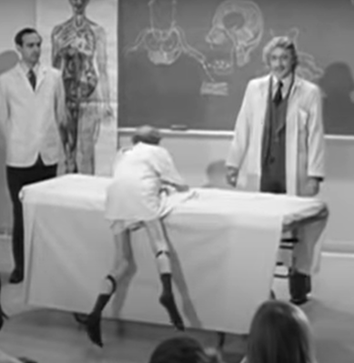The second most important change Tarzan made was increasing his movement.
Movement comes in two forms, activity and exercise.
Activity: Activity is simply not sitting still. The more we move the better as far as our metabolic health is concerned. Sedentary behavior is associated with all the chronic conditions we have been discussing. “Activity” encompasses things like going for a walk, gardening, housework, walking the dog, going for a bike ride, mowing the yard, playing golf.
Some of those things can rise to the level of exercise if done with enough intensity—like that competitive speed gardening I’ve been hearing so much about.
Sitting still too much leads to mitochondrial dysfunction. Our mitochondria are working around the clock turning the foods we eat into ATP to power our cells. When we don’t burn that ATP it will gum up the works.
Exercise. Activity by itself is not enough—we also need exercise. Exercise is a key component of recovering and maintaining our metabolic health. Exercise helps to improve our insulin sensitivity, and the right kind of exercise can help us maintain or increase our heart and lung capacity as well as our muscle mass and bone density.
Exercise was critical to Tarzan’s metabolic improvement. It helped Tarzan become more insulin sensitive; it caused his body to create more and better mitochondria. It helped Tarzan maintain bone density and muscle mass as he aged—it was exercise that enabled Tarzan to still be able to climb a tall oak tree at the age of ninety-three.
Note first of all the distinction between activity and exercise. Exercise is when we push our body to an extent that it triggers an adaptive response, meaning that we put our body under enough stress that our body says, “I don’t know what just happened, but I’ve to get ready in case it happens again.” The body then responds by releasing hormones that trigger growth and repair. More muscle is created; the infrastructure to get oxygen and nutrients to those muscles improves—new capillaries are created; mitochondria get the signal to divide. Our muscles get stronger and improve their metabolic function; our heart and lungs get stronger and more efficient.
There are two types of exercise that can help us recover and maintain our metabolic health: resistance training and endurance training.
Resistance training is putting enough load on your muscles to cause your body to respond by creating more muscle. Most of us lose 3%-5% of our muscle mass per decade starting in our 30’s, and that loss accelerates when we reach our 60’s – unless we take steps to avoid it. (This loss of muscle mass is called “sarcopenia.”)
Resistance training can be done with body weight (requiring no equipment), dumbbells, resistance bands (all of which can be done at home) or with barbells and machines down at the gym. The benefits of resistance training include more muscle mass, which means more mitochondria, and which will result in more energy being burned.
To help understand the benefits of resistance training, consider these two case studies:
Here we have a frail elderly man with a marked degradation in his ability to hop:

Here we have a robust elderly man punching a guy in the face:

What is the difference between the gentleman who has lost the ability to hop and the gentleman who has retained the ability to punch a guy in the face?
Muscle mass.
Though much can happen that is beyond our control, whether we find ourselves in old age frail and unable to effectively hop, or robust and able punch a guy in the face, depends largely on how well we build and maintain muscle mass. And that requires resistance training (along with getting enough protein).
Endurance training means putting enough stress on our system that it stimulates our body to increase the capacity of our heart and lungs to get oxygen and nutrients to the muscles that need them.
There are a couple of ways to go about this. One is through what is commonly called “cardio”: doing some physical activity that gets our heart into a target range and keeps it there for a period of time. (As conditioning improves, both the duration and intensity can increase.) Depending on your level of conditioning, that could be anything from walking around the block to running a 15K. It can be done on a bike, treadmill, elliptical machine, stair-climbing machine—anything that gets your heart into the target range and keeps it there. (Information from the National Academy of Sports Medicine on how to identify the proper level of intensity for you can be found here.)
Another way to build endurance is through high intensity interval training.
(HIIT). In HIIT, we alternate between intense all-out effort and moving at a more leisurely pace. This can be done with pretty much any form of exercise: running, bicycling, stationary bike, elliptical, floor exercise. Some forms require no equipment whatsoever. And it doesn’t have to take much time. You can get a good workout that triggers an adaptive response in 12-15 minutes. (I need to reiterate here: Please do not start doing intense workouts without consulting your doctor to ensure it’s okay. If you start doing this and flop over dead, I don’t want you blaming me.) The benefits of HIIT include increased insulin sensitivity, improved cardiovascular function, and better mood. Information from the National Academy of Sports Medicine on how to implement HIIT can be found here. NOTE: If you have not been exercising regularly you may not want to jump right into HIIT. You might do regular cardio for a while until you are better conditioned.